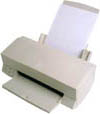The Item in a Series
Recognize an item in a series when you find one.
Items in a series occur whenever a sentence lists two or more things. The items can be any type of grammatical unit, such as nouns, verbs, participles, infinitives, or subordinate clauses, to name a few.
Read these examples:
To make her famous muffins, Paulette bought fresh broccoli, baker's chocolate, flour, sugar, and eggs.
Broccoli, chocolate, flour, sugar, and eggs = list of nouns.
After Chad clutched his heart, swooned, and fell to the floor, Professor Borglum nudged him with her foot, ordering him to the front of the class to make his speech.
Clutched, swooned, and fell = list of verbs.
When Harold saw his girlfriend Gloria across the crowded airport, he sprinted toward her, leaping over luggage, colliding with travelers, and dodging potted palms.
Leaping, colliding, and dodging = list of present participles.
Because Tara is hungry but broke, she hopes to spot Anthony in the cafeteria, flirt with him over a pizza, and then get the poor boy to pay for the meal.
To spot, to flirt, and to get = list of infinitives (In a series, you do not need to repeat to after the first one).
My dog Floyd bolts under the bed whenever thunder booms, strangers knock on the door, or I reach for the flea shampoo.
Whenever thunder booms, whenever strangers knock on the door, and whenever I reach for the flea shampoo = list of subordinate clauses (The subordinate conjunction whenever is understood to repeat even if you do not include it).
Maintain parallel structure with items in a series.
Items in a series should have parallel structure. You maintain parallelism when you use equal grammatical units. If the first item is a noun, then the following items must also be nouns; if the first item is a subordinate clause, then so must the other items be.
Nonparallel structure is lopsided like this:
Harry spent his afternoon
,
, and
.
Harry spent his afternoon playing tennis, returning overdue library books, and then he ate a mushroom and pineapple pizza.
Parallel structure, the correct way to list items in a series, has this format:
Harry spent his afternoon
,
, and
.
Harry spent his afternoon
,
, and
.
Harry spent his afternoon playing tennis, returning overdue library books, and eating a mushroom and pineapple pizza.
This afternoon, Harry played tennis, returned overdue library books, and ate a mushroom and pineapple pizza.
Punctuate items in a series correctly.
Whenever you have three or more items in a series, each item requires punctuation to separate it from the others. Depending on the complexity of the list, you can use either commas or semicolons.
Series with Commas
The most common pattern has this format:
Item + , + Item + , + and + Item
Here are examples:
To survive another boring art history lecture, you should drink a strong cup of coffee before class, empty sugar packets into your mouth when Professor Lemon has his back turned, and sharpen a pencil to poke yourself in the thigh.
Stephanie refuses to go water-skiing with us because she is afraid of getting sliced by the boat propeller, tangling with a snake, becoming an alligator's lunch, or having a brain-sucking amoeba crawl up her nose.
Some handbooks and style guides will tell you that the comma before the last item in the series—the serial comma—is unnecessary. Although you do have the option of leaving it out, the editorial policy of many magazines, newspapers, and book companies is to use a comma before the coordinating conjunction. You will, as a result, notice its presence in many of the professional publications that you read.
Series with Semicolons
Use semicolons to separate the items when they already include commas. The pattern looks like this:
Item + , + More Information + ; + Item + , + More Information + ; + and + Item + , + More Information
Read these examples:
My heroes are Batman, who combines brains and brawn; Captain Picard, who commands respect; and Wiley Coyote, who never gives up.
What a day! Poor Veronica spent the morning cooking, cleaning, and washing; the afternoon running errands, grocery shopping, and studying; and this evening ironing, making lunches, and brushing the dog.
©1997 - 2025 by Robin
L. Simmons
All Rights Reserved.
